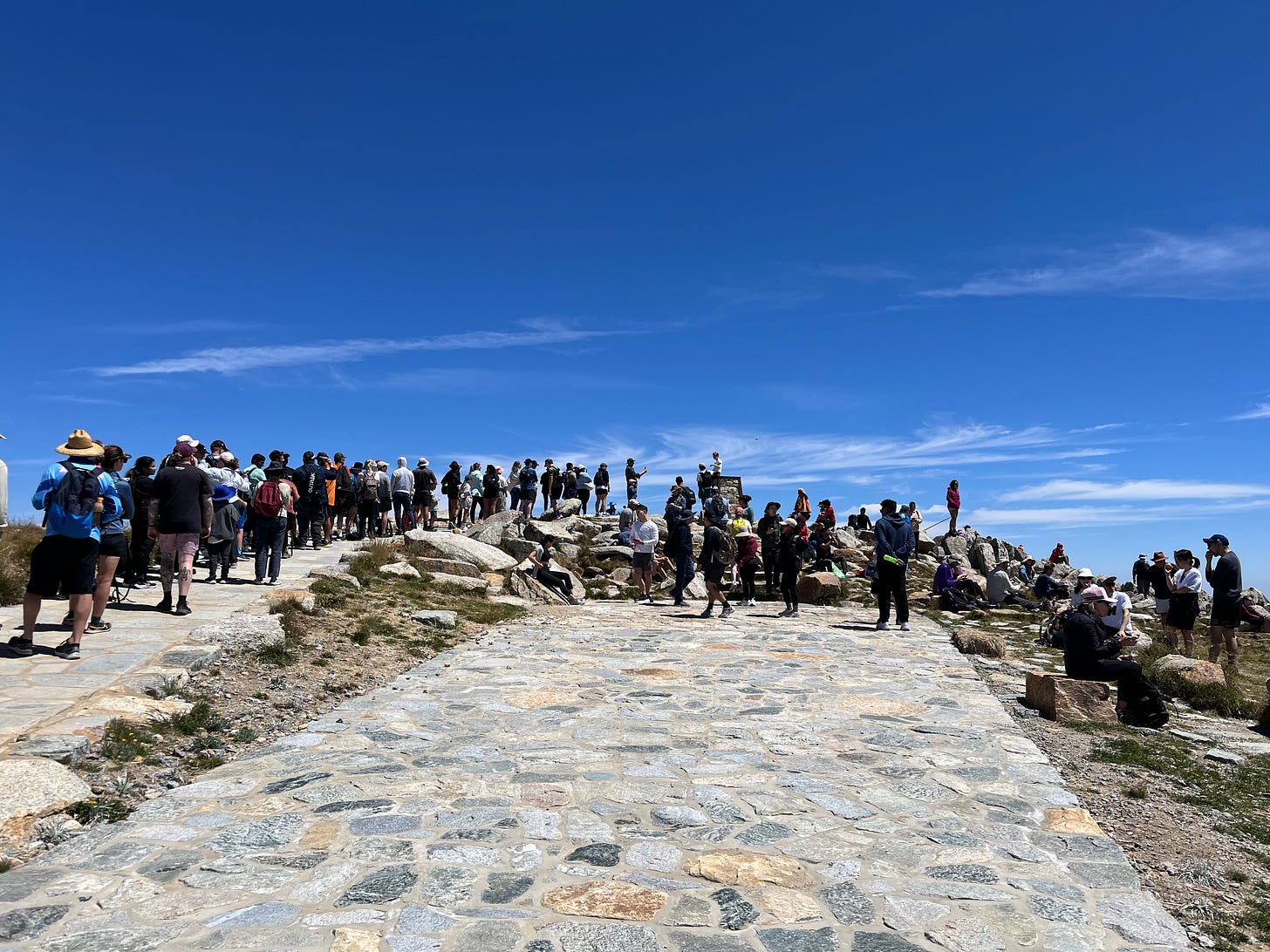It’s the holy grail of mountaineering, the Seven Summits. The highest on each continent. Everest, of course, literally sits at the top, the highest in Asia and the world, then there’s Denali in North America, Aconcagua in the Andes of South America, Elbrus in the Caucasus on Europe’s eastern edge, lonely Kilimanjaro, Africa’s highest and the world’s highest free-standing peak, Mount Vinson in Antarctica, the most isolated of the lot. And then comes the contention. Continental contention. Is Australia a continent? Or is it Oceania? And if it’s Oceania, what else is included besides Australia? Aotearoa New Zealand is now thought to lie on the microcontinent of Zealandia, so would that count? All this leads to a debate as to whether the seventh summit here is Mount Kosciuszko in Australia, or the nearly twice as high Puncak Jaya in Indonesia. Reinhold Messner, one of the greatest mountaineers in history, after all, chose Puncak Jaya for his Seven Summits push. I, however, am not one of the greatest mountaineers in history (I’ve never even worn crampons), so I headed for Kosciuszko.
Given its European name in honour of an 18th Century Polish freedom fighter (Kunama Namadgi is its Ngarigo name, the indigenous language of this part of Australia), the mountain sits in its eponymous National Park, the largest in New South Wales. It’s a worthy setting for the highest peak in the country, a flowing landscape of dry, white eucalypts, forest patches, shallow, sun-dappled rivers just beginning their courses, and huge, glacier-strewn boulders speckling the largely bare hills. It’s an unusual landscape for Australia, I think as we wind our way through the wide glacial valleys, each hill brow inspiring new exclamations about its prettiness.
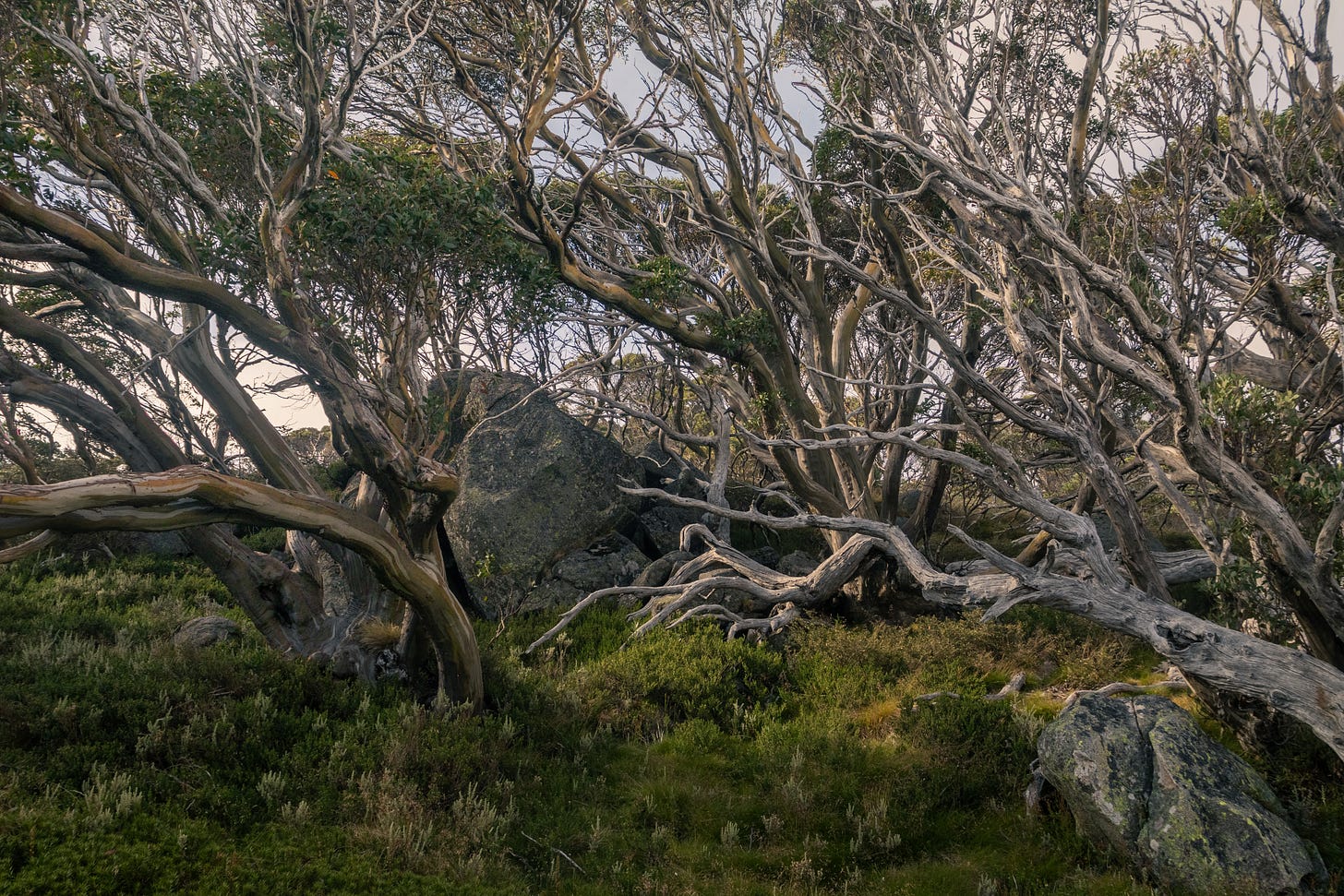
I’ve come down here with a good friend of mine, a New South Welshman who has only ever seen this place in the depths of winter a couple of times. “I can’t believe I’ve never really been here,” he says to me from the driver’s seat, eyes wide on the landscapes unfolding before us. Usually, skiing is the reason people visit this region, the Snowy Mountains are, despite all my common knowledge of Australia, apparently fairly well named, locked up in deep snow for much of the winter. This morning, though, the land is hemmed by mist and cloud as we ascend to our destination of Charlotte Pass. The start of our summit walk.
Mount Kosciuszko, by the standards of the other six of the Seven Summits, is fairly small. At 2228 metres (7310 feet) tall, it isn’t even half the height of the next tallest of the Seven, and not even half as high as Everest Base Camp. Still, on this, the world’s oldest “continent” it is the highest point, so we set off to complete it.
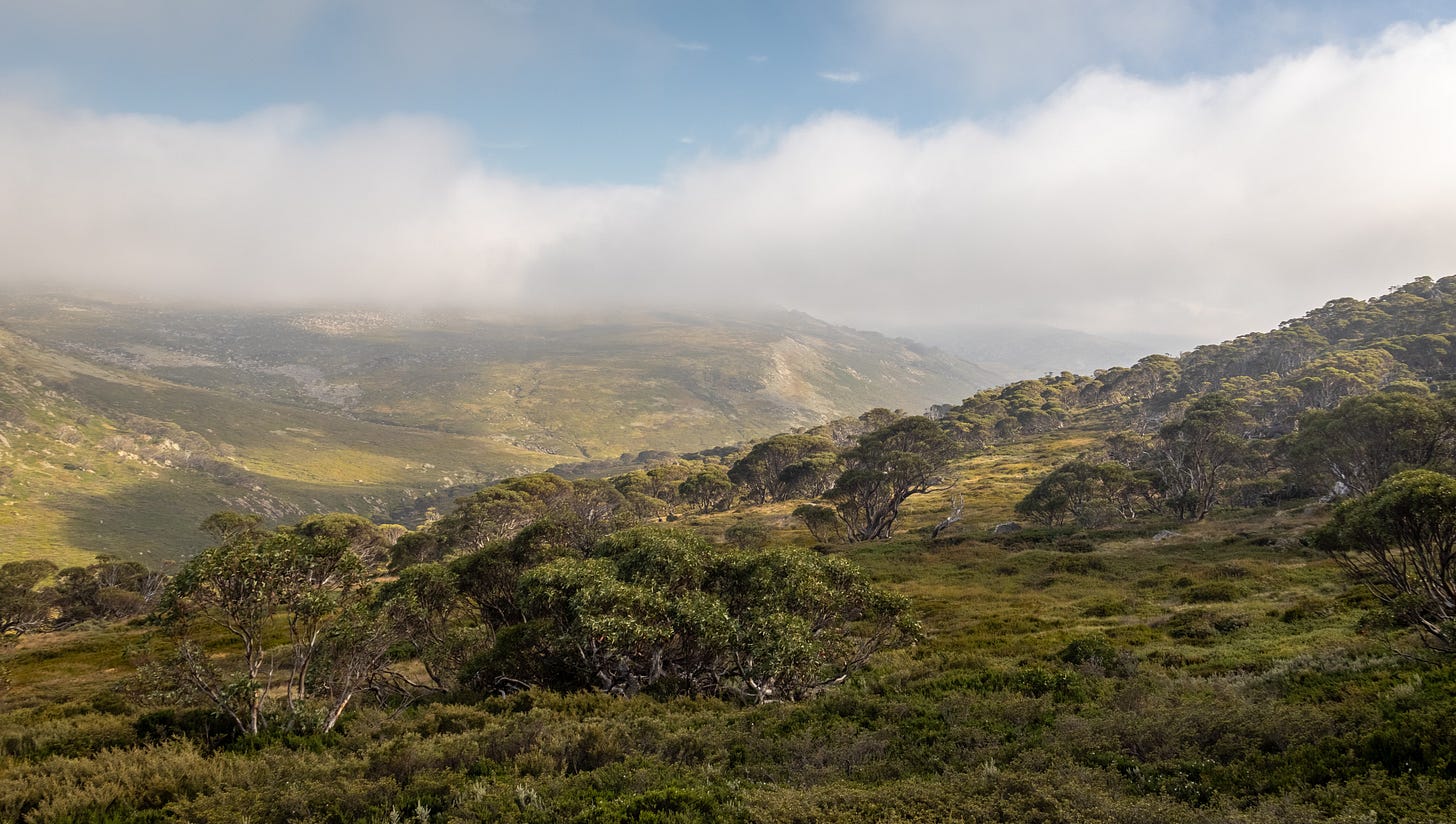
I can preface this whole thing by saying the journey to the top of Australia is a hike. It’s a long walk. A no-experience-needed summit, just a bit of fitness. Nothing like the strenuous scramble up similarly tall Taranaki over on the North Island of Aotearoa New Zealand. But it isn’t the strain or the achievement here that makes it worth it, it’s the setting. Starting out with a view of the Main Range, morning mist lifting of the peaks, and heading up the wide, well-maintained track in a blessedly un-Australian coolness, Kosciuszko captures us from the first step. Electing to start on the out-and-back Summit Trail, we watch as other hikers soon shrink to ants as they tackle the distant Main Range Walk - a 22-kilometre loop around the ridge line concluding with Kosciuszko’s summit - on the other side of a great glacial valley. We follow it for a few kilometres, finding it hard not to stare across the great carved gash in the landscape, its floor dotted with a few tents and a babbling misfit stream.
As we approach the halfway point of the summit walk, the day’s heat beginning to feel much more familiarly antipodean, we cross that very misfit stream. In the dry landscape of summer, it seems a silly name as I pose next to the sign for the Snowy River, but as I dip a hand in the tantalisingly clear running water, its prickly iciness eliminates my doubts. Looking further along the track, watching it wind into the mountains, I begin to feel a sense of adventure. That is until we see a group around our age are setting up for breakfast along its banks, filling pots with water and soothing tired feet in the chill, their large packs and gear betraying a much more ambitious hike than ours.
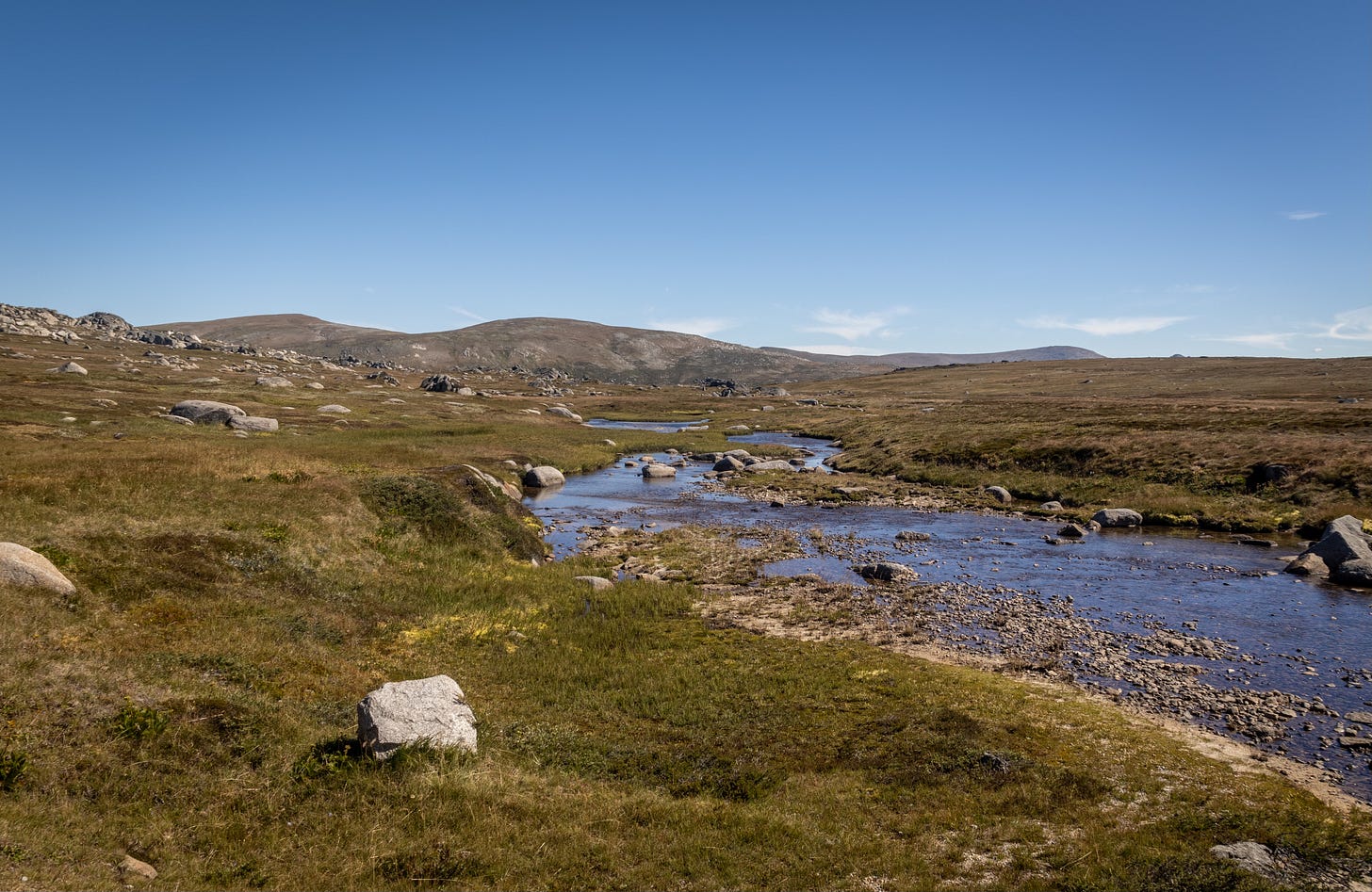
Past the Snowy River, the track takes a steeper turn towards Kosciuszko, and soon we find that the summit we thought we were heading for isn’t the mountain at all. And past the Seaman’s Hut, standing in a cool wind, we see our target. It stands out in no particular way for its geography, built more like a big sloping hill than any other major mountain I have seen, it stands out because its summit is lined with people. From the relative loneliness of the trail start, we hit crowds in the far valley. It’s January 26th, and annual charity walks have brought hundreds to the top of Australia. Among the crowds we, rather ironically in such a big group, sign a petition to “save Kosciuszko National Park”, not from people but from ponies - brumbies, feral horses that trample the landscape in their apparent thousands - before making our last push up the metal boardwalks to the very top.
For the first time in my life I have to queue on a mountain. I’ve heard the stories of Eryri/Snowdon and Everest, but seeing it first-hand is a little depressing. Queueing for nature just feels inherently odd. We do it anyway, taking our photo at the pinnacle of the Australian continent, smashing down some trail snacks, and deciding, surrounded by views deep into neighbouring Victoria, that we need to make the most of this landscape. Gone is the idea of the out-and-back. We head down towards the Main Range Walk.
We’re doing it backwards, but as I’ve found out, there’s no set way to enjoy nature. Taking this route down from the summit, we enter new landscapes. The valleys grow steeper and narrower, and instead of the lazy streams of the lower valleys, water stands still in precariously perched alpine lakes. Each one looks tantalising for a cold water swim, but more metal boardwalks tell us that this is a landscape not to be trampled, its treasured alpine flowers more important than my desire for a dip. I don’t want to end up like the brumbies.
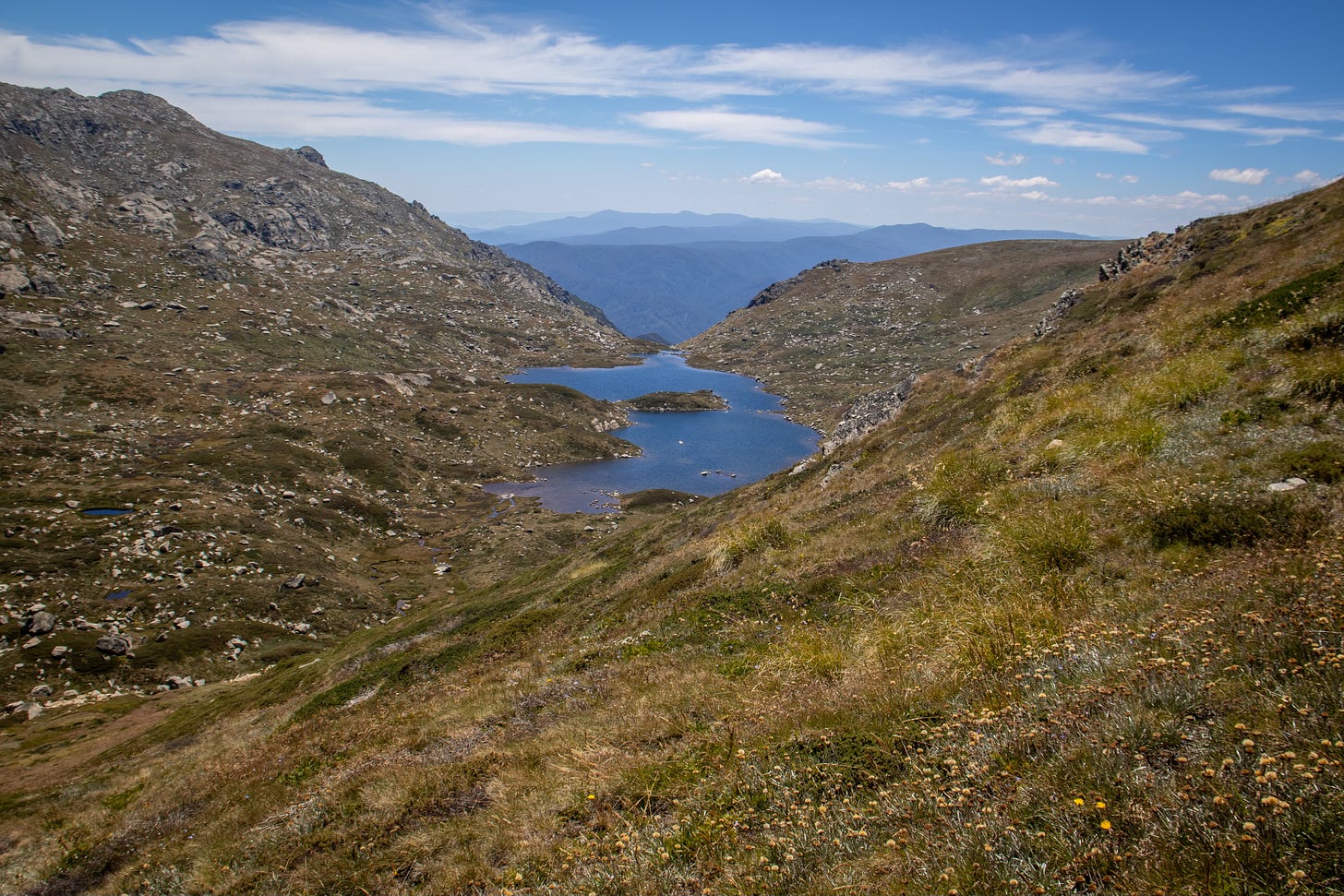
The rest of the walk, once again becoming mostly bereft of people after a brief wander into the flow of traffic approaching Kosciuszko, is full with the pure pleasures of nature. Quietness, vistas, trickling streams. In a very English turn, I liken the landscape to a scaled up Lake District, the bare-looking hills only lacking the flocks of Herdwicks and farmhouses of Cumbria (and being drenched in a heat never seen in Northwest England). With the nostalgic scenery, balmy warmth, good company, the achievement of reaching the top of Australia behind us, and despite the growing blisters on my feet, the remaining kilometres pass with an intense sense of peace.
I might even count it as my first of Seven.
Finding Earth acknowledges the Traditional Owners of Country across Australia, the Wiradjuri, Wolgalu, Ngunnawal and Monaro Ngarigo people of the Country on which Kosciuszko National Park sits, and pays respects to Elders past, present and emerging.




